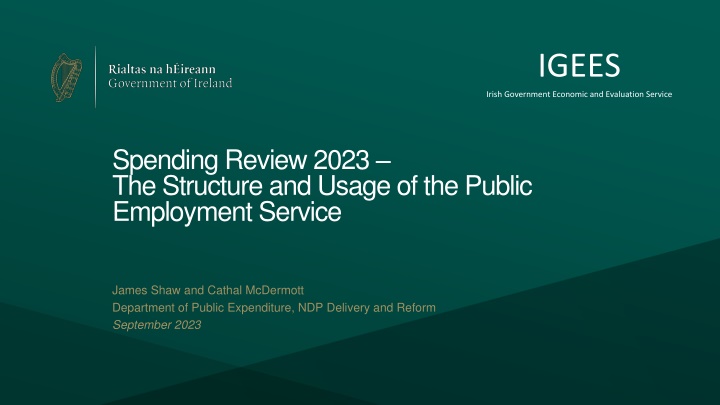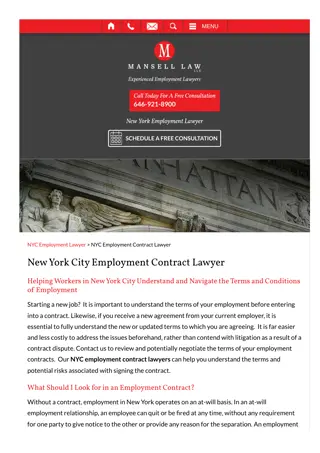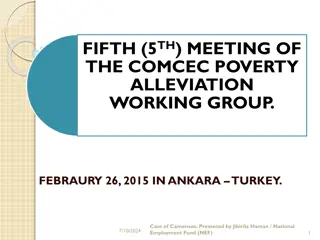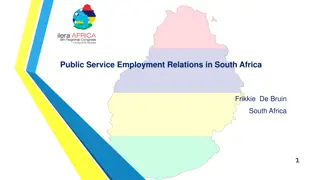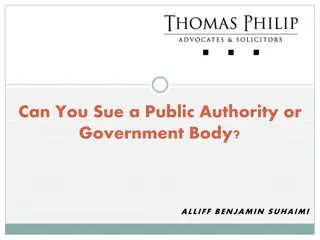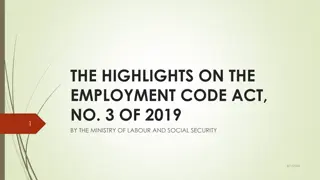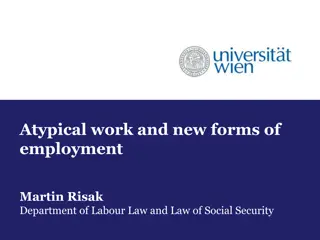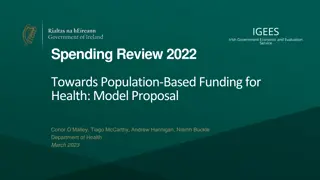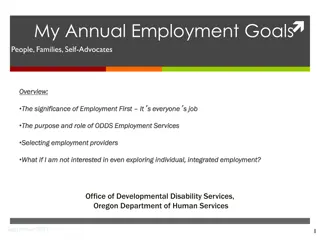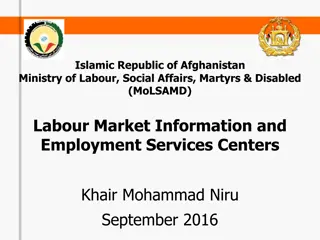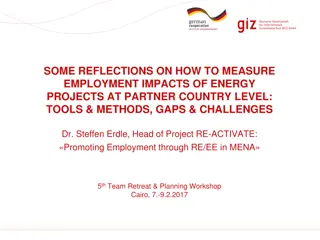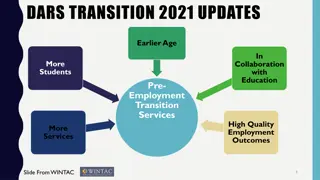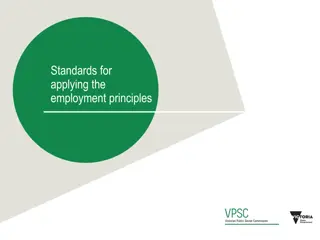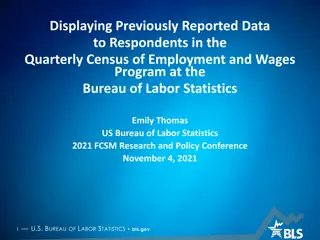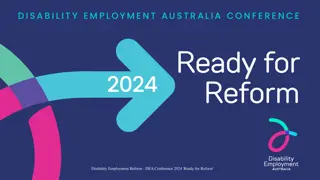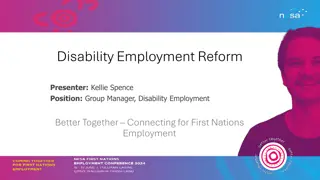IGEES: Public Employment Service Structure & Usage Review
The IGEES Spending Review 2023 delves into the structure and usage of the Public Employment Service in Ireland, examining key findings on PES usage, evaluation evidence on employment outcomes, and recommendations for enhancing jobseeker engagement with the PES to reduce long-term unemployment risks.
Download Presentation

Please find below an Image/Link to download the presentation.
The content on the website is provided AS IS for your information and personal use only. It may not be sold, licensed, or shared on other websites without obtaining consent from the author.If you encounter any issues during the download, it is possible that the publisher has removed the file from their server.
You are allowed to download the files provided on this website for personal or commercial use, subject to the condition that they are used lawfully. All files are the property of their respective owners.
The content on the website is provided AS IS for your information and personal use only. It may not be sold, licensed, or shared on other websites without obtaining consent from the author.
E N D
Presentation Transcript
IGEES Irish Government Economic and Evaluation Service Spending Review 2023 The Structure and Usage of the Public Employment Service James Shaw and Cathal McDermott Department of Public Expenditure, NDP Delivery and Reform September 2023
Spending Review 2023 Overview, Aims & Objectives Overview The Public Employment Service (PES) comprises a system of schemes and services, both provided directly by the State through Intreo and by contracted providers (Intreo Partners), which help match supply and demand of the labour market through information, placement and active support services. The PES has evolved significantly since the Global Financial Crisis and comprises many schemes and services to support jobseekers to find employment. Aims and Objectives Set out the structure of the PES as it is currently organised. Present a snapshot of PES users across the services and schemes as at December 2022/January 2023. Consider available evidence from the literature on the effectiveness of employment supports. 2 Rialtas na h ireann | Government of Ireland
Spending Review 2023 Key Findings Key Policy Relevant Findings PES Usage As of December 2022, ff the 97,793 current jobseekers who had agreed a Personal Progression Plan, 58% (57,113) were on the caseload of PES job-search assistance (Intreo, Intreo Partners, and JobPath residual caseload). The remaining 42% (40,680) were participating on active labour market programmes, of which almost two- thirds (65%) were on: Community Employment (46%) T S (12%) or Rural Social Scheme (7%), which are direct job creation schemes. A further quarter (25%) were enrolled on education and training schemes and the remaining 10% were on work placement or self-employment schemes (e.g. Back to Work Enterprise Allowance, Work Placement Experience Programme). 3 Rialtas na h ireann | Government of Ireland
Spending Review 2023 Key Findings Key Policy Relevant Findings Evaluation evidence on employment outcomes Direct job creation schemes (e.g. CE, T S) are the largest schemes by recipients and allocation. There is currently limited evidence that they are effective interventions to promote progression to employment, but can represent progression for jobseekers distant from the labour market. It is important that PES referrals to direct job creation schemes are targeted only at clients who are most distant from the open labour market. Short-term training in specific in-demand skills and job-search assistance are associated with the best rates of employment progression. SOLAS data from 2019 shows that most (68%) DSP referrals to Further Education and Training were to courses at NFQ Level 1-4. Level 5 to 6 courses result in better employment outcomes and should be encouraged where jobseekers have the prerequisite previous educational attainment. The evaluation literature suggests that more frequent contact between case workers and jobseekers at the initial stage of an unemployment claim is associated with a shorter unemployment duration. Consideration should be given to how jobseekers engage with the PES, particularly during the initial stages of unemployment to reduce the risk of long-term unemployment. 4 Rialtas na h ireann | Government of Ireland
Spending Review 2023 Key Findings Key Policy Relevant Findings Responsiveness of the PES The current low level of unemployment provides an opportunity to target PES resources at cohorts who were previously inactive or distant from the labour market (e.g. Qualified Adults, jobseekers with a disability). The new contracted PES contracts provide additional burst capacity within the PES in the event of a sudden increase in unemployment. 5 Rialtas na h ireann | Government of Ireland
